Building Reliable Systems: Hydroelectric Dam Monitoring in Western Pennsylvania
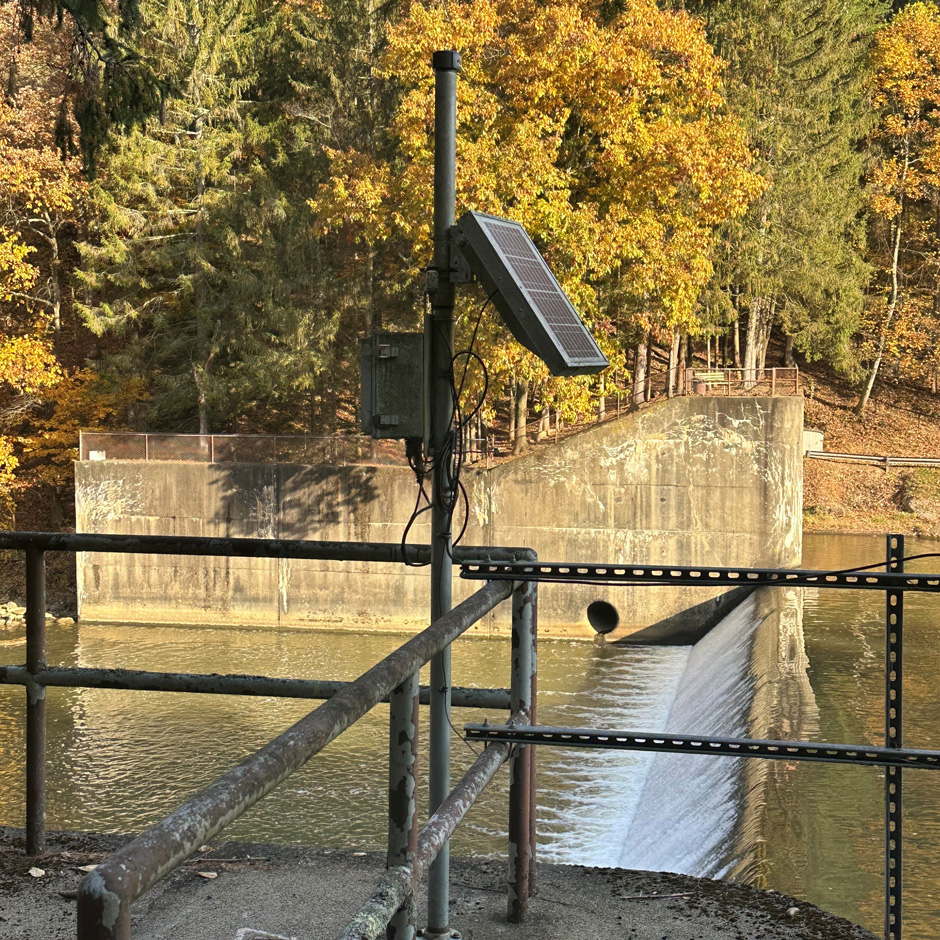 A NexSens water quality monitoring station located at the dam's stilling basin. (Credit: Craig Goldinger / Mahoning Creek Hydroelectric Company)
A NexSens water quality monitoring station located at the dam's stilling basin. (Credit: Craig Goldinger / Mahoning Creek Hydroelectric Company)Hydroelectric dams are a source of renewable energy, and many have taken the place of fossil fuel reliance across the United States. While they provide green energy to the grid, they also impact the environment above and below the dam.
In order to protect these habitats and mitigate any potential harm, hydroelectric dam operators monitor water quality conditions above and below the dam to ensure conditions meet ecosystem needs. Eagle Creek Renewable Energy has several hydroelectric plants positioned throughout Pennsylvania, and each is managed and monitored by a team of professionals.
One of these managers is Craig Goldinger, a regional manager with Eagle Creek Renewable Energy in Western Pennsylvania. More specifically, Goldinger manages All Dam Five and All Dam Six, which are hydroelectric plants on the Allegheny River, and Mahoning Creek Hydro, which is on Mahoning Dam.
Goldinger started his professional life working at a coal plant, but after the plant was shut down, he applied for a position at the hydro plant. Over the years, he moved up the ranks, eventually taking over as the regional manager. The hydro plant provides a stable field and fulfills a critical role for nearby communities.
“Electricity is pretty basic necessity for everybody nowadays. Once you have it—I mean, unless you’re Amish—once you have electricity, it’s hard to go without. And [. . .] you’re providing a service that everybody needs in a stable and safe environment,” explains Goldinger.
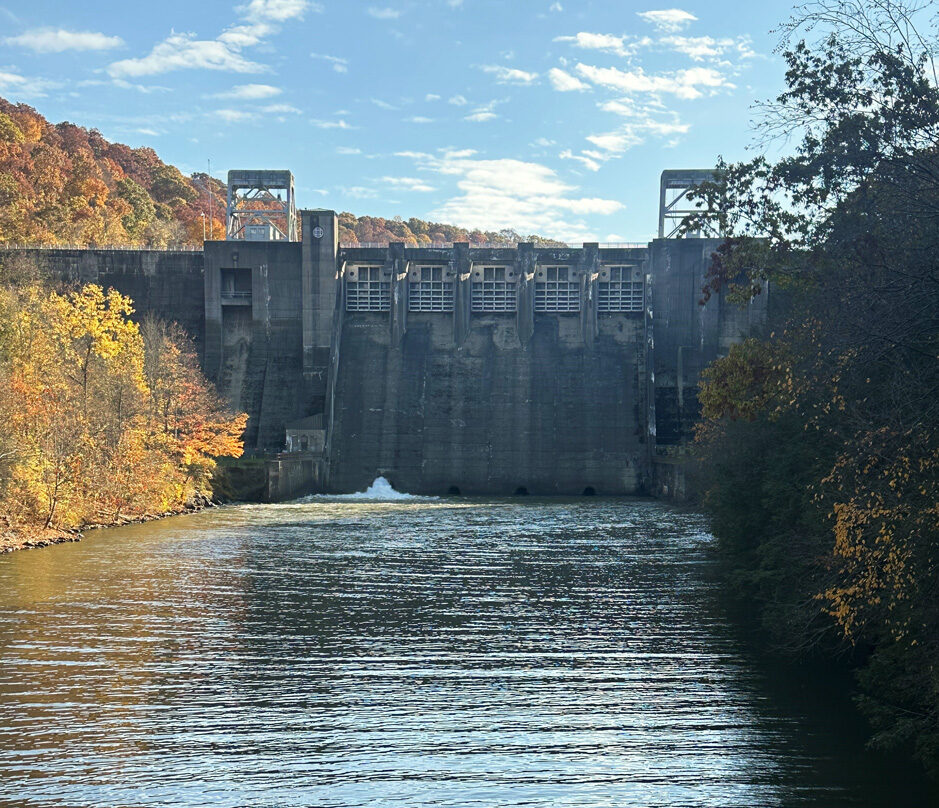
View of Mahoning Creek Hydroelectric Dam from downstream. (Credit: Craig Goldinger / Mahoning Creek Hydroelectric Company)
Dam Monitoring on Mahoning Creek
For Eagle Creek Renewable Energy, their primary concern is employee safety, followed by environmental consideration, and finally, providing power to the grid. Environmental obligations include the continuous monitoring of the waters above and below the dam to ensure they are meeting legal requirements.
Limits are established by the U.S. Army Corps of Engineers and change based on the season and needs of the species below the dam. Dissolved oxygen (DO) and temperature are the two most important parameters for them to monitor. Both can have devastating impacts of the cold water fishery below the dam if DO falls too low or the temperature climbs.
A YSI Sonde equipped with temperature, DO, and turbidity measures water quality in the reservoir, stilling basin, and downstream of the dam. The sonde is connected to a NexSens data logger, which transfers the gathered data to the cloud, where it is viewable via WQData LIVE.
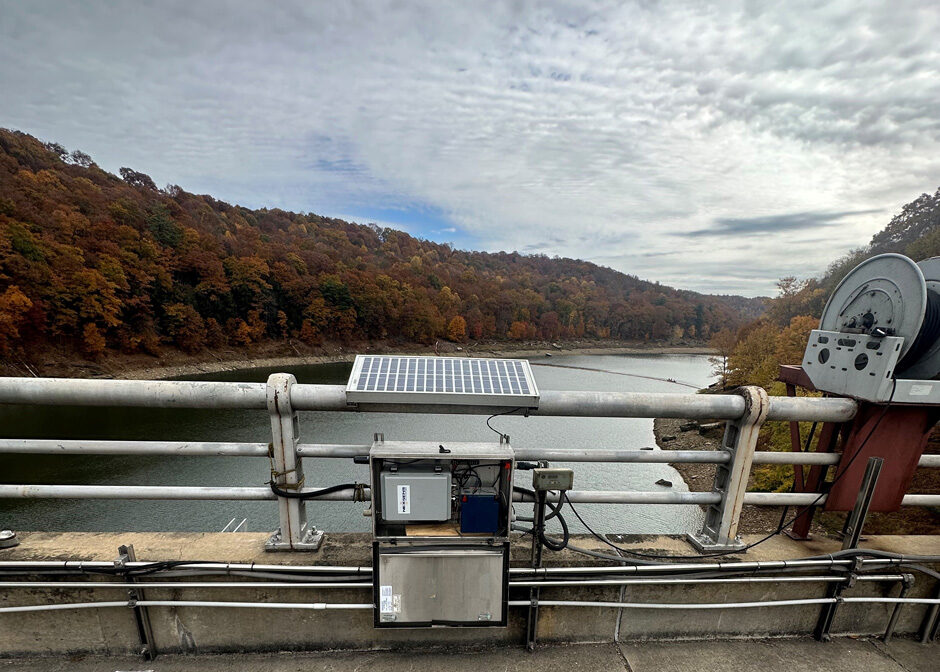
A NexSens water quality monitoring station positioned at the intake. (Credit: Craig Goldinger / Mahoning Creek Hydroelectric Company)
Relying on Reliable Systems
Goldinger spends his day communicating with each plant and checking the live data coming from each monitoring site. Outside of business hours, Goldinger continues to monitor the dams, receiving alerts via WQData LIVE when a parameter is not meeting requirements. The logged data is used to support reports demonstrating that the dam is meeting compliance standards.
He expands on the experience, “I work 24/7, 365 days a year. Whether I’m on vacation or sleeping, we have alarms set up that if anything happens I get woke up in the middle of the night, whether it’s a regular alarm or an environmental alert and then we have to go from there.”
In cases where the temperature is too high, the dam must be shut off in order to allow free-flowing water that has not been influenced by the turbines, which can raise the temperature slightly. The U.S. Army Corps of Engineers use a ring jet to raise DO levels, which mixes with the lower levels below the dam, helping them meet compliance.
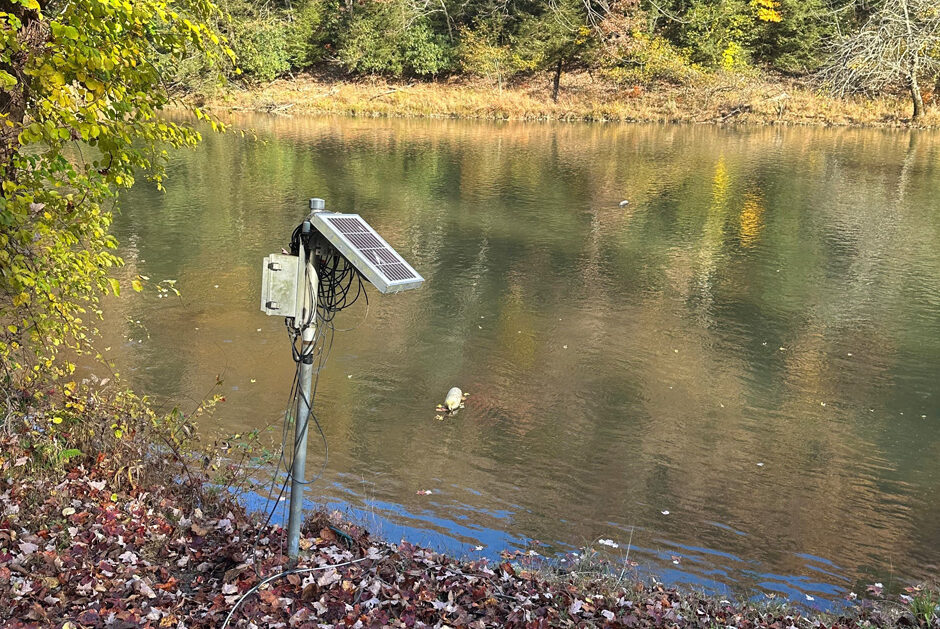
A NexSens water quality station downstream of the dam. (Credit: Craig Goldinger / Mahoning Creek Hydroelectric Company)
The hydro plants can only run if they are meeting compliance standards, and if the monitoring systems fail, then the entire plant has to shut down until levels can be restored. Additionally, if the system stops functioning for any reason, the dam has to be shut off due to operators being unable to track if the dam is compliant. Such disruptions can have a significant impact on energy availability.
“[The systems] keep us running. Especially, with the environmental restrictions that we have at Mahoning, they are [. . .] a very reliable service,” states Goldinger.
Conclusion
All of the work put in by workers at the plant hangs in the balance of the real-time systems staying operational. While Western Pennsylvania has seen the closures of many coal plants in recent years, the hydroelectric dam has stayed operational. The reliance on hydropower means a great deal to staff and locals in the region. The hydro plant provides more employment opportunities and a renewable source of power compared to coal.
“A big part that is rewarding is that we’re still providing electric to the public—clean and renewable energy. Which is very important in today’s climate, with the activists that are out there now that worry about global warming and other issues.”
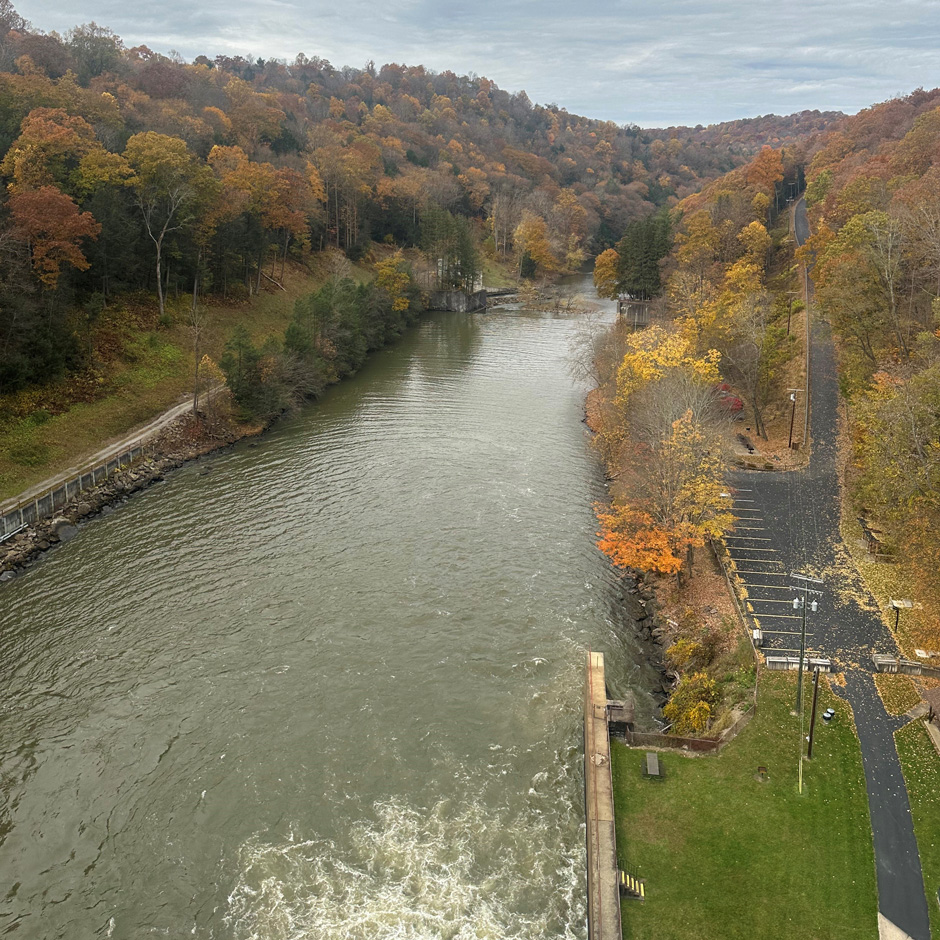
View from the top of the dam. (Credit: Craig Goldinger / Mahoning Creek Hydroelectric Company)




Pingback: FishSens Magazine | Making Dams in California Fish-Friendly - FishSens Magazine